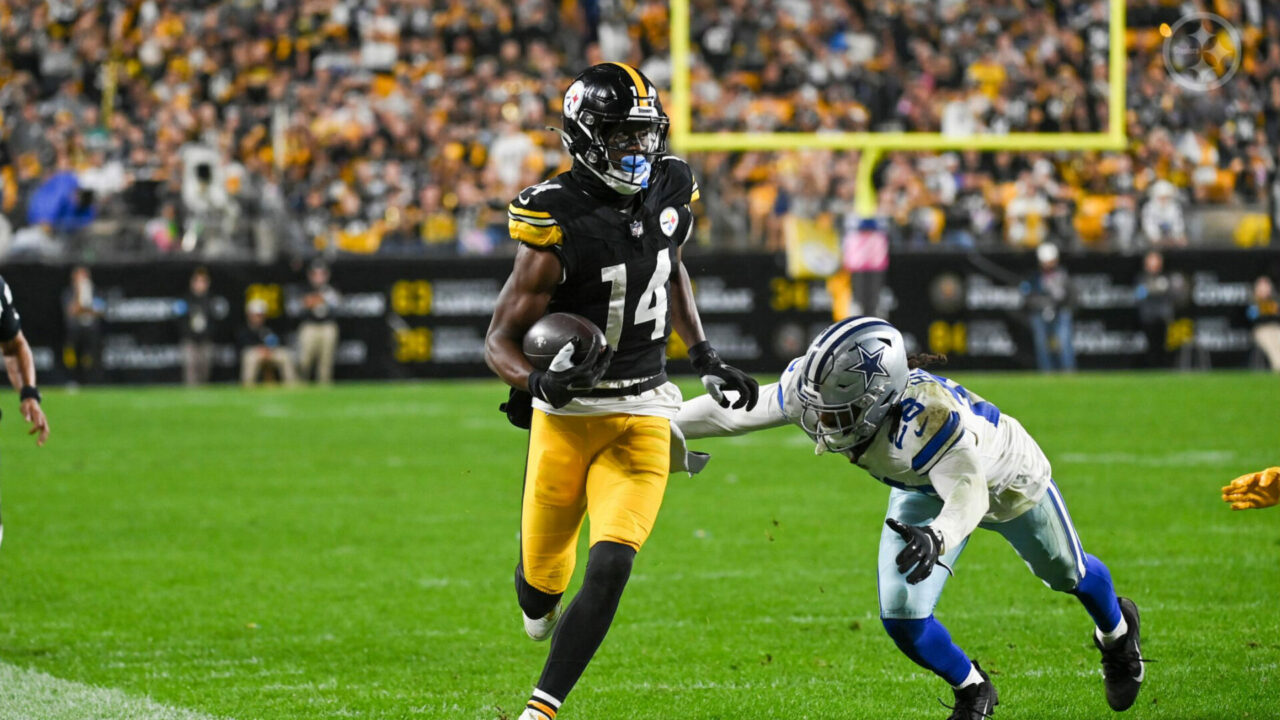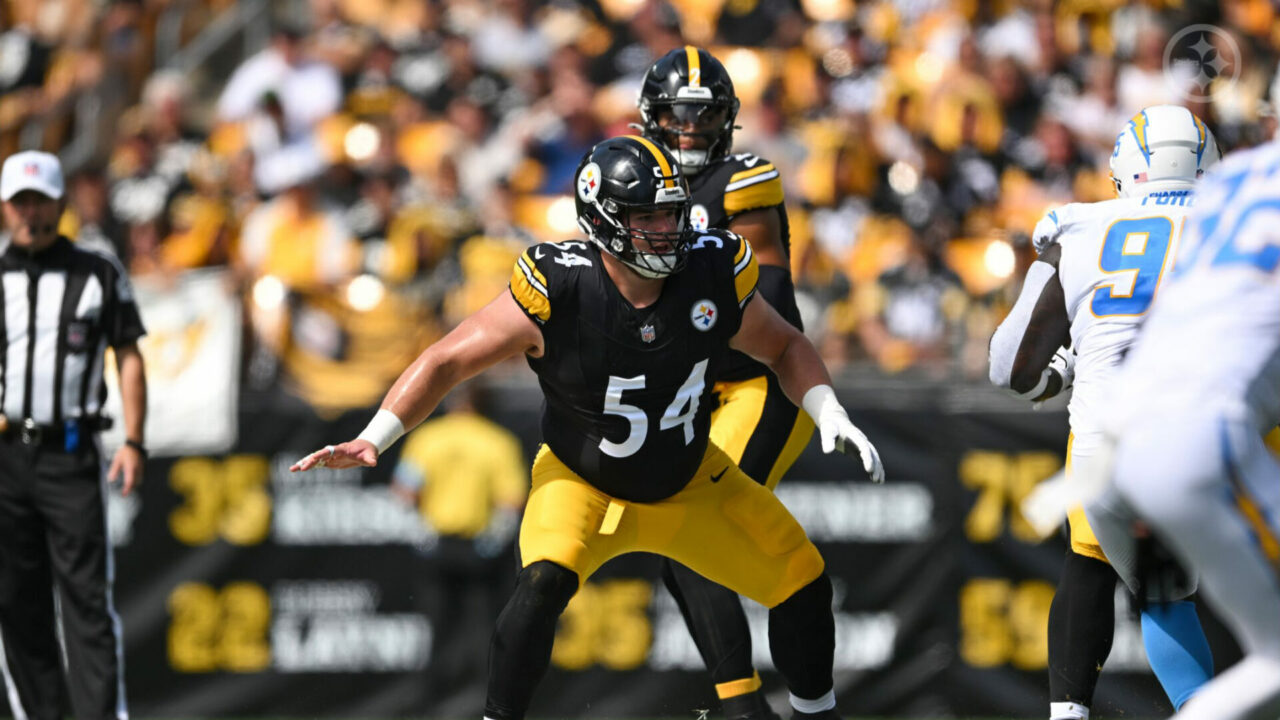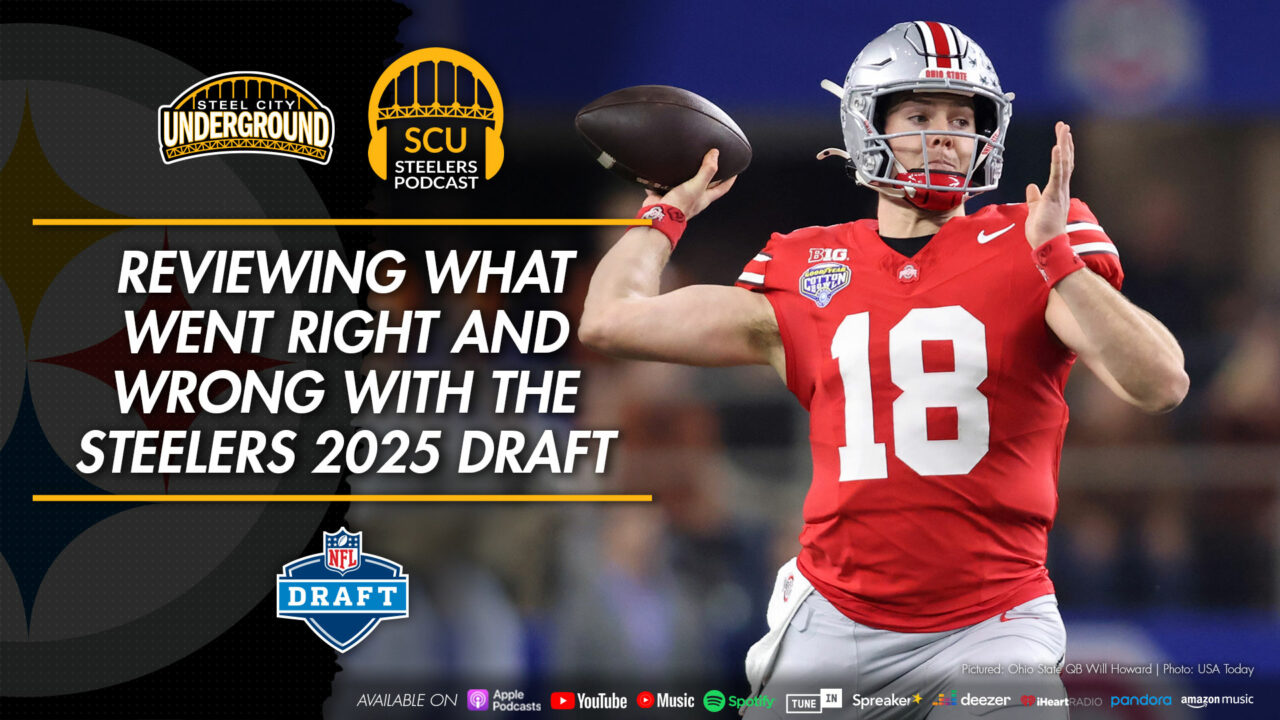Overreactions from Steelers Nation: Why didn’t they sign/keep (insert name)?!
Welcome to my weekly edition of “Overreactions from Steelers Nation”. This week, I’m trying to figure out if the local Steelers media has short-term dementia or selectively chooses what they want to remember!
Fans have been especially brutal this weekend. Some of the local Pittsburgh sports media, who should know better (i.e. that responsibility in reporting thing I talk about) are even worse.
While watching some of the playoff games, there are some former Steelers who were involved in them. It raises the question of “Why did the Steelers let that player go?”
The answer isn’t always a simple one, but that hasn’t stopped some from making their hot takes:
Another personnel mistake. Better to give the money to Derek Watt, Zach Banner and not use them https://t.co/5U3blHdZv0
— Ed Bouchette (@XRuleExecutive) January 22, 2022
And that’s where I’ll start with this article, although there’s plenty more to go around.
Some of the short-term memory issues with these takes are as follows: the Steelers entered the 2021 offseason $20 million over the cap, Ben Roethlisberger wasn’t a sure thing to return (he took a $5 million pay cut as part of his contract restructure, to alleviate the cap), and then the team wound up with only $9 million in free space to attempt to cobble together a roster in March.
Also note, there was a major push to improve the offensive line and running game this offseason too.
Keep that in mind as we proceed through some of the names they kept versus some they allowed to “leave”.
Tyler Matakevich
According to a lot of fan logic, Derek Watt is just a fullback and not worth any money because he doesn’t play any on offense.
Enter former Steeler, “Dirty Red” Tyler Matakevich, who appeared in all 17 games for the Buffalo Bills this season, but only played his natural linebacker position in eight of them: a total of 58 snaps, 30 fewer than Derek Watt played on offense for Pittsburgh.
Matakevich has been paid $6.4 million on the Bills cap over the last two seasons compared to Watt’s $5.0 million.
Case in point, the Steelers get the better bargain, as fullbacks don’t play as often and they also filled a major special teams role, whereas Matakevich is strictly a special teamer. Regardless, both are valued for playing special teams and are among the best at doing so in the NFL. Hence, why they’re making what they make, albeit still among the premium special teams players in the league.
Derek Watt
Watt is primarily a special teams ace who flirts as a fullback.
Some people take issue with that, for whatever reason, when many teams don’t even roster a true fullback!
I don’t recall Ed B. having the same vigor when Roosevelt Nix, Watt’s predecessor at fullback with the Steelers, didn’t see the field often too. In 2017, Nix’ Pro Bowl season – and with Todd Haley as the offensive coordinator – he had five games with more than 20% of the offensive snaps, and eight where that total was 10 or fewer snaps.
Nix would get seriously injured and never return to be the player he previously was, which along with another player who left (listed below, Tyler Matakevich) prompted the team to find someone to fill a special teams role.
Watt plays on nearly all of the special teams units for the Steelers, but the fact Bouchette is bringing him up as a cap liability in the 2021 is facetious at best: he was signed in 2020, and had a lower base salary for 2021, though his cap hit was spread out and a tad higher – just under $3 million – this year.
That’s a whopping… brace yourself for it… 1.6% of the Steelers total expenditures. (And a far better bargain than Matakevich, whom everyone forgot about until Buffalo’s playoff game on Sunday!)
But hey, cut Watt because you feel he’s only a fullback, in order to sign a part-time nickel cornerback…
Mike Hilton
That part-time nickel corner was Mike Hilton, aforementioned because the Steelers didn’t even make him an offer.
How were they supposed to, when they had no cap space and were equally priced out of the market?
Hilton is the 27th highest-paid corner in the NFL. Consider teams field at least two cornerbacks at all times, and he’s in the top third as a situational slot corner or third cornerback on the Bengals roster.
This is also the crux for the Steelers, with Joe Haden as the third-highest paid player at the position, in the entire NFL this season. They had to make a decision on yet another free agent cornerback, Cameron Sutton, who is more versatile than Hilton.
Hilton ended up missing four games in 2020, which further gave the Steelers front office insight into how they may operate by replacing him. Sutton was his replacement in those games, but also filled in for Steven Nelson and Joe Haden, cementing his versatility – and potential to start on the outside – as reasons to make him the priority signing instead.
Sutton’s contract came in with a $1.7 million cap number for 2021, with a two-year $9 million deal as opposed to Hilton’s four-year, $24 million, with a $5.5 million hit.
Had the Steelers went with Hilton, they wouldn’t have been able to sign Sutton and at least one other player unless Hilton took a similar deal: which he was adamant against during the previous offseason’s discussions.
As it stands, the Steelers simply couldn’t afford him in March when they had less than $10 million in cap room to work with.
And not to pile on Hilton, but his 17 game tenure in Cincinnati this season didn’t see the “blitz specialist” register a single sack. Even with the extra game this season, Hilton failed to have more pass deflections, interceptions, or sacks than he did in only 12 games in Pittsburgh last season.
Maybe the Steelers front office does know what they’re doing?
Zach Banner
Heading into last offseason, everyone and their brother knew the Steelers had to improve their offensive line and their running game.
Of course, that means don’t re-sign one of your young promising tackles, who won the starting job in 2020 before getting injured in the very first game?
Could you imagine the ire of this same Pittsburgh sports media if they brought back Hilton but not Sutton or Banner at the time? Geez! Yet, here we are, with perfect hindsight… the truth is, Banner isn’t the liability everyone tries to make him out to be. His $2.8 million cap number in 2021 is another small sum overall (1.5% of the Steelers cap) and he can be cut this offseason too, saving the team $5 million as necessary.
But back in March 2021, where else were you going to get a starting offensive tackle for $2.8 million?
And how were the Steelers to know he wouldn’t have fully/properly recovered from his knee injury? Banner practiced in camp, but it became apparent he had setbacks in the preseason and the Steelers had to change gears because of that.
The best laid plans don’t always work out as intended, unfortunately.
Alejandro Villanueva
Villanueva, a 33-year-old offensive tackle, was also part of the Steelers wanting change along their offensive line. The aging monster of a man and fan favorite signed a two-year $14 million deal with the Baltimore Ravens, following the NFL Draft, to become their new right tackle, but would quickly revert back to his left tackle position he played at in Pittsburgh due to injuries and necessity. (He wasn’t a good right tackle in the single game he played there against the Raiders this season.)
Villanueva better fit the Ravens run-block schemes as they are one of the lowest passing offenses by volume, and production, in the NFL. Needless to say, the Steelers couldn’t have afforded to pay his salary let alone have him be a liability upfront.
James Conner
Conner was actually paid less by the Cardinals than what the Steelers paid Banner. However, let me ask you this: how comfortable would you have felt taking on Conner, and forgoing a CB, OT, or DE instead, when the running game was a priority focus of being upgraded?
Also, how would you have felt if Conner got hurt, leading to Benny Snell as the starter again in his place?
Conner’s touchdowns, 15 of them, popped off of the page as some fans pointed and recognized him during Arizona’s run near the top of the AFC. The former Steelers running back would still miss two games, after his counterpart, Chase Edmonds, was also injured and unable to split backfield duties.
Aside from his absurd goal line usage with the Cardinals, Conner’s numbers actually took a dip in 2021 versus his 2020 season “behind a bad offensive line” in Pittsburgh. His yards-per-carry dropped from 4.3 to 3.7, his total yards would be 31 more, however, with 752 to 721… on 33 more carries.
As a receiver he had a better season with a 10.1 receiving average, but his 3.7 YPC were fewer than his replacement, Najee Harris, who had 3.9, and would rush for 1200 yards and score 10 total touchdowns (7 on the ground).
It’s really hard to justify why the Steelers would’ve brought back Conner at any price. Some say the team could’ve used the first-round pick spent on Harris for an offensive lineman, but looking at who was available and went with the next picks at that position, the outcome with Conner and a rookie lineman probably wouldn’t have been better than going with Harris.
Jordan Berry
I actually heard people who were upset about moving on from Berry this season, for seventh round rookie and Ray Guy award winner, Pressley Harvin III.
I mentioned short-term memories earlier, but does anyone recall the weekly chants to cut Berry in 2018, 2019, and 2020? Geez! The Steelers even released him in 2020, only to bring him back after veteran punter Dustin Colquitt failed at being a substantial upgrade.
Bud Dupree
Another of the “why was he let go” names is Bud Dupree, who elevated himself as a premier pass rusher in 2020 and would command a high dollar in free agency as such.
With no money to work with, the Steelers couldn’t do much to keep Dupree. The team had already used a franchise tag on him in 2020 which paid $15.8 million, and with a second subsequent tag, Dupree would’ve received a pay increase that would’ve exceeded almost double of what Pittsburgh had left in cap space.
Dupree signed a five-year, $82.5 million contract with the Tennessee Titans to open up free agency last March. He would miss six games, accumulating only three sacks, eight QB hits, and two tackles for loss.
His replacement, second-year pro Alex Highsmith, would register six sacks, 15 QB hits and 15 TFLs.
Nuff said.
Melvin Ingram
Last but not least, the player the Steelers actually did sign – but many felt was a “waste”.
The reason most critics feel this way is that they don’t understand how free agency and the salary cap operate. Ingram was far from a priority free agent signing, which occurs when players like Dupree and Hilton land big deals in March.
No, Ingram’s name wasn’t inked to a deal until well after the NFL Draft, when the Steelers freed up cap space on the reporting day of training camp by releasing David DeCastro. With some spare change, the Steelers took a chance on the 32-year-old edge rusher who was coming off of a knee injury sustained multiple times in 2020.
The main reason? Depth.
The Steelers had a hint that T.J. Watt might hold out during camp and Ingram could offer a veteran presence during practice. There was also a plan in place for the aging edge rusher to not have to play an entire game, coming fresh off the sidelines to aide Watt and Highsmith while they took a breather.
Ingram fetched a one-year $4 million deal, but would soon back out of it as he complained about playing time – an odd flex considering Watt’s perennial place among Defensive Player of the Year candidates meant he wasn’t leaving the field in lieu of Ingram.
It was also an odd situation, considering that Ingram had played 64%, 86%, 100%, 49%, and 60% of the games he appeared in to date until the trade rumors surfaced and he was promptly sidelined for the budding star Highsmith.
Ingram would be traded to Kansas City, to have a solo sack, two tackles for loss and five QB hits with the Chiefs while playing 46%, 39%, 66%, 53%, 59%, 71%, 40%, 70%, 72%, 54% and 75% of the Chiefs’ defensive snaps.
In other words, his playing time didn’t really see much more of an uptick than it was already at in Pittsburgh, leading me to believe this was more of the Steelers giving a nod to a veteran player to pursue other endeavors than a truly “bad deal” as everyone else seems to think it was.
Highsmith, on the other hand, would register all of his sacks (6.0) and QB hits (15), and but one of his TFLs (14 of 15 total) from the point where Ingram was benched.
Needless to say, the trigger point in Pittsburgh was Ingram knowing a younger player was going to outright replace him. Whether he was given the option or demanded it, the outcome turned out better for the Steelers long-term.









